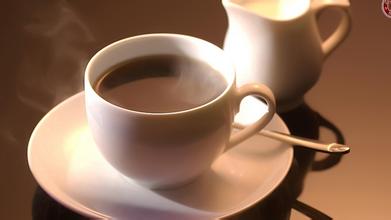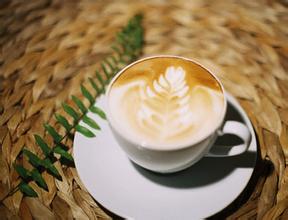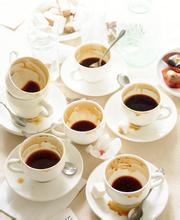Colombian Coffee describes the characteristics of Flavor and taste of varieties in producing areas; introduction to the processing methods of fine coffee with grinding degree
Coffee is the pride of Colombians, and the things Colombians like to talk about most, except for their football, which was once one of the best in the world, is the coffee they are proud of. Drinking coffee in Colombia is a pleasure. Not only is it necessary three times a day, but the streets are full of cafes and customers are full of seats from morning till night. There is no instant saying in the cafe. It is now cooked and sold. The young lady pours it with exquisite porcelain bowls, respectfully presents it to the customers, and adds sugar at will. The aroma is pervasive in the room, the bowl is sweet and delicious, and the slow taste is endless in aftertaste. No wonder the local people are addicted to it.
Colombian coffee has a silky taste. Colombian coffee is equated with high quality and good taste. It is sweet in acid, low in bitterness, rich in nutrition, with a unique sour and mellow taste, and the sour, bitter and sweet flavors of Colombian super coffee match well. Unique fragrance, after drinking, the aroma fills the whole mouth. Exhale the aroma from the mouth again from the nose, the smell is very full. Perhaps you will find it too overbearing, because it will occupy the taste buds, mind and even soul as quickly as possible. In people's life, it is full of sour, sweet, bitter and astringent, and the aroma of this coffee is enough to take away everything in the world. What people enjoy is not just a cup of coffee, but also the quiet moment that coffee brings to people. The most characteristic of Columbia super class is its aroma, full-bodied and thick, with clear high quality acidity, high balance and endless aftertaste.
Colombia, located in the northwest of South America, is a beautiful country with a long history. Indians have lived on this land since ancient times. It was colonized by Spain in 1531 and gained independence in 1819. It was renamed in 1886 to commemorate Columbus, the discoverer of the American continent. Colombia has beautiful mountains and rivers, beautiful scenery, pleasant climate, spring all year round and fresh air. Colombia is rich in products, especially coffee, flowers, gold and emeralds are known as the "four treasures". Today, the country is the second largest coffee producer after Brazil, the world's largest exporter of Arabica coffee beans and the world's largest exporter of washed coffee beans. Colombian coffee is often described as having a silky taste, and of all coffee, it is the best balanced, soft, smooth and ready to drink. It has won praise that no other coffee can match: known as "green gold" Colombia's suitable climate provides a real "natural pasture" for coffee. Coffee trees in Colombia are mainly cultivated in the Andes, on steep slopes about 1300 meters above sea level, where the annual temperature is about 18 degrees Celsius, annual rainfall is 2000 to 3000 millimeters, latitude 1 °- 11 °15 north, longitude 72 °- 78 °west, the specific range of elevation is more than 2.000 meters. A special combination of factors, latitude, altitude, soil, plant origin of species and varieties of coffee production in Colombia's coffee growing area, rain patterns produced by the climate of the coffee growing area and tropical convergence, changing topography, luminosity, favorable temperature range throughout the year, moderation and Rain Water's distribution And include some common cultural practice areas in the process of selective logging and transformation, including washing and drying. Very suitable for the growth of coffee, mild climate, humid air, and can be harvested regardless of season. This is why Colombian coffee is of high quality. Colombia has three Codiera mountains running north and south, right into the Andes. Coffee is grown along the highlands of these mountains

Important Notice :
前街咖啡 FrontStreet Coffee has moved to new addredd:
FrontStreet Coffee Address: 315,Donghua East Road,GuangZhou
Tel:020 38364473
- Prev

Description of Rwandan Coffee Flavor introduction to the production area of grinding degree of fine coffee beans
The biggest harvest season for Rwandan coffee is during the main rainy season, from March to the end of May. During the harvest season, farmers spend most of their day picking coffee fruits by hand. In the afternoon, farmers carry coffee fruits in traditional baskets made of banana leaves to a cleaning station a few hours away. The mechanic uses his hands to make the best quality coffee with crimson color.
- Next

Hawaiian Coffee Flavor description Grinding degree treatment method introduction to baking degree
Hawaii's coffee industry has to compete with the expanding tourism industry. Most coffee is grown on the slopes of MaunaLoa. Mauna Loa was originally a volcano located in the western part of the Kona region on the island of Hawaii. The coffee producing area is about 30 kilometers long and its growing areas are mainly concentrated in the north and south of the area. Coffee trees are planted in relatively desolate areas, but they
Related
- Detailed explanation of Jadeite planting Land in Panamanian Jadeite Manor introduction to the grading system of Jadeite competitive bidding, Red bid, Green bid and Rose Summer
- Story of Coffee planting in Brenka region of Costa Rica Stonehenge Manor anaerobic heavy honey treatment of flavor mouth
- What's on the barrel of Blue Mountain Coffee beans?
- Can American coffee also pull flowers? How to use hot American style to pull out a good-looking pattern?
- Can you make a cold extract with coffee beans? What is the right proportion for cold-extracted coffee formula?
- Indonesian PWN Gold Mandrine Coffee Origin Features Flavor How to Chong? Mandolin coffee is American.
- A brief introduction to the flavor characteristics of Brazilian yellow bourbon coffee beans
- What is the effect of different water quality on the flavor of cold-extracted coffee? What kind of water is best for brewing coffee?
- Why do you think of Rose Summer whenever you mention Panamanian coffee?
- Introduction to the characteristics of authentic blue mountain coffee bean producing areas? What is the CIB Coffee Authority in Jamaica?

